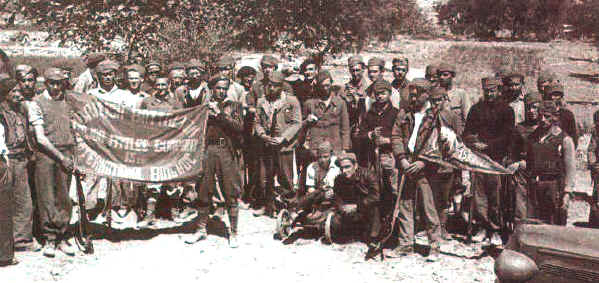Hola Sierra
Thanks for the response
I have some pics of horse cavalry from both sides but actually need,want information on saddles and tack and any specialised clothing used by mounted troops
For Whom The Bell Toll (movie ) has some cool action stuff with Falangist cavalry but the gear (saddles and tack ) is mostly US
If you have any pics let me know and i can share
Regards
Sam
Thanks for the response
I have some pics of horse cavalry from both sides but actually need,want information on saddles and tack and any specialised clothing used by mounted troops
For Whom The Bell Toll (movie ) has some cool action stuff with Falangist cavalry but the gear (saddles and tack ) is mostly US
If you have any pics let me know and i can share
Regards
Sam




